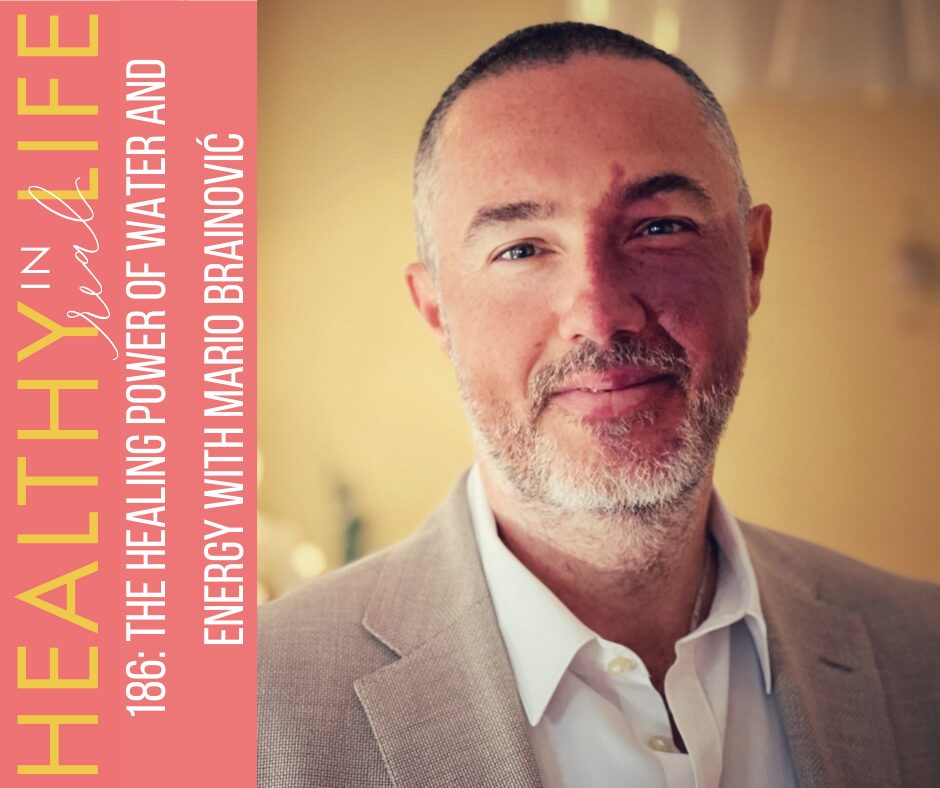Hi friends! A brand new podcast episode is live and I’m so excited to share this conversation with Mario Brainović all about the most essential element of health: Water
Here’s what we discuss:
– Why Mario believes our bodies have an innate ability to heal—and how water plays a key role in that process
– What Analemma technology is, and how it transforms regular water into a coherent state that supports energy, brain function, and vitality
– The science behind hydrogen water, and why it’s gaining momentum in the health world
– How water stores frequencies, acts as an energy transmitter, and connects us to nature on a biological level
– The link between water quality, cellular energy, and long-term wellness
– Why meditation and whole foods are cornerstones of a sustainable healthy lifestyle
– How our personal energy can influence the biology of those around us (!)
…and so.much.more!
If you’ve ever wondered whether the water you drink is truly supporting your health, this episode will leave you inspired to see it in a whole new light. ✨
Connect with him here and check out Analemma here (use the code FITNESSISTA for 10% off)
186: The Healing Power of Water and Energy with Mario Brainović
Mario Brainović, CEO of New Earth Technologies Ltd.
Mario is an entrepreneur, researcher and a visionary in the field of health and wellness. For years he ran a successful international advertising agency and a production house. He was always very passionate about health and wellness, about finding natural ways to heal, regenerate and restore the delicate balance between body, mind and spirit. This led him to establish a natural pharmaceutical company that successfully helped many people for years. After a while he became very passionate about water.
Realizing its extraordinary significance he established New Earth Technologies, a company that offers Analemma Water to the world, as well as invests in the research of coherent water and its effects on biological
systems – humans, plants and animals.
Partners:
Check out We Feed Raw! Maisey goes crazy for this! I use it as a topper for her kibble or mix it into her pup loaf. You can try the raw version, the raw dehydrated kibble, and they’ll help you customize a plan for your pup. Use FITNESSISTA30 for 30% off your Meal Plan Starter Box here!
The Lifewave X39 patches have been a gamechanger for my energy; the Pilot is obsessed, too! Check them out here.
Check out my new favorite red light device here, and use the code FITNESSISTA for a huge discount.
I’ve been using Nutrisense on and off for a couple of years now. I love being able to see how my blood sugar responds to my diet and habits, and run experiments. You can try out Nutrisense here and use GINA50 for $50 off.
If any of my fellow health professional friends are looking for another way to help their clients, I highly recommend IHP. You can also use this information to heal yourself and then go one to heal others, which I think is a beautiful mission. You can absolutely join if you don’t currently work in the health or fitness industry; many IHPs don’t begin on this path. They’re friends who are passionate to learn more about health and wellness, and want to share this information with those they love. You can do this as a passion, or start an entirely new career.
You can use my referral link here and the code FITNESSISTA for up to $250 off the Integrative Health Practitioner program. I highly recommend it! You can check out my review IHP Level 1 here and my review of Level 2 here.
Thank you so much for listening and for all of your support with the podcast! Please be sure to subscribe, and leave a rating or review if you enjoyed this episode. If you leave a rating, head to this page and you’ll get a little “thank you” gift from me to you.








.png?w=1200&resize=1200,0&ssl=1)







